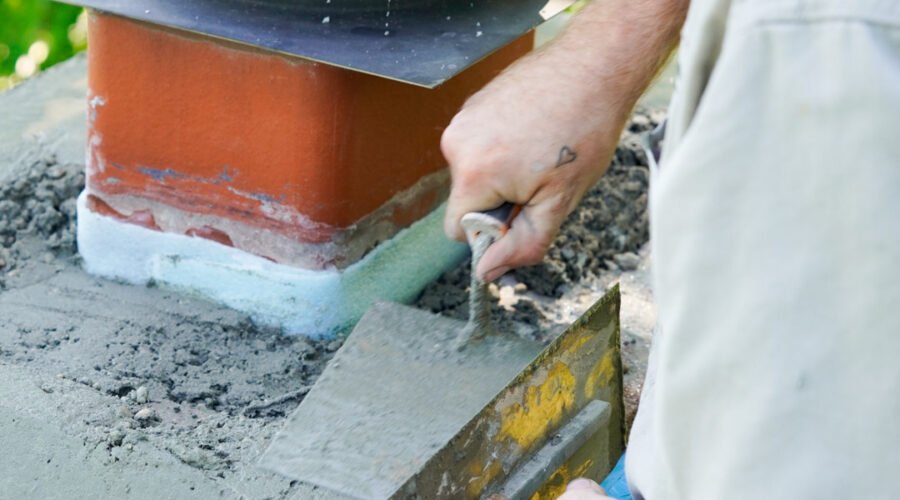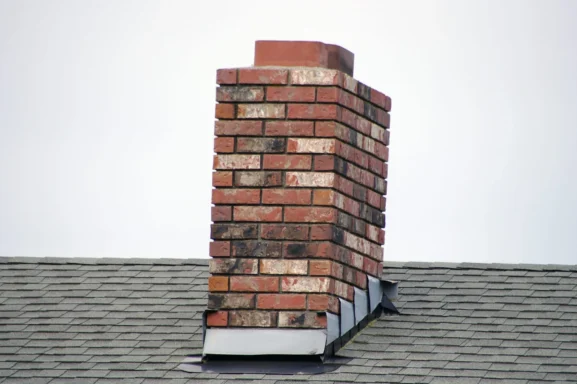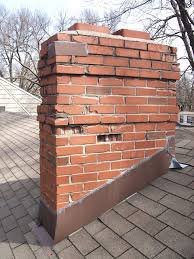Expert Chimney Crown Inspection & Repair: Protect Your Home from Costly Damage
A well-maintained chimney crown stands as your home’s first line of defense against water damage and structural deterioration. We often see homeowners overlook this crucial component until serious problems arise leading to costly repairs that could’ve been prevented with regular professional inspection and maintenance.
Our experience has shown that chimney crowns face constant exposure to harsh weather elements freezing temperatures and moisture that can create cracks or deterioration over time. These seemingly minor issues can quickly escalate into major structural problems affecting your entire chimney system and potentially compromising your home’s safety.
When it comes to protecting your home’s value and ensuring your family’s safety we’ll guide you through the essential aspects of professional chimney crown inspection and repair. By understanding the importance of proper maintenance you’ll be better equipped to make informed decisions about your chimney’s care.
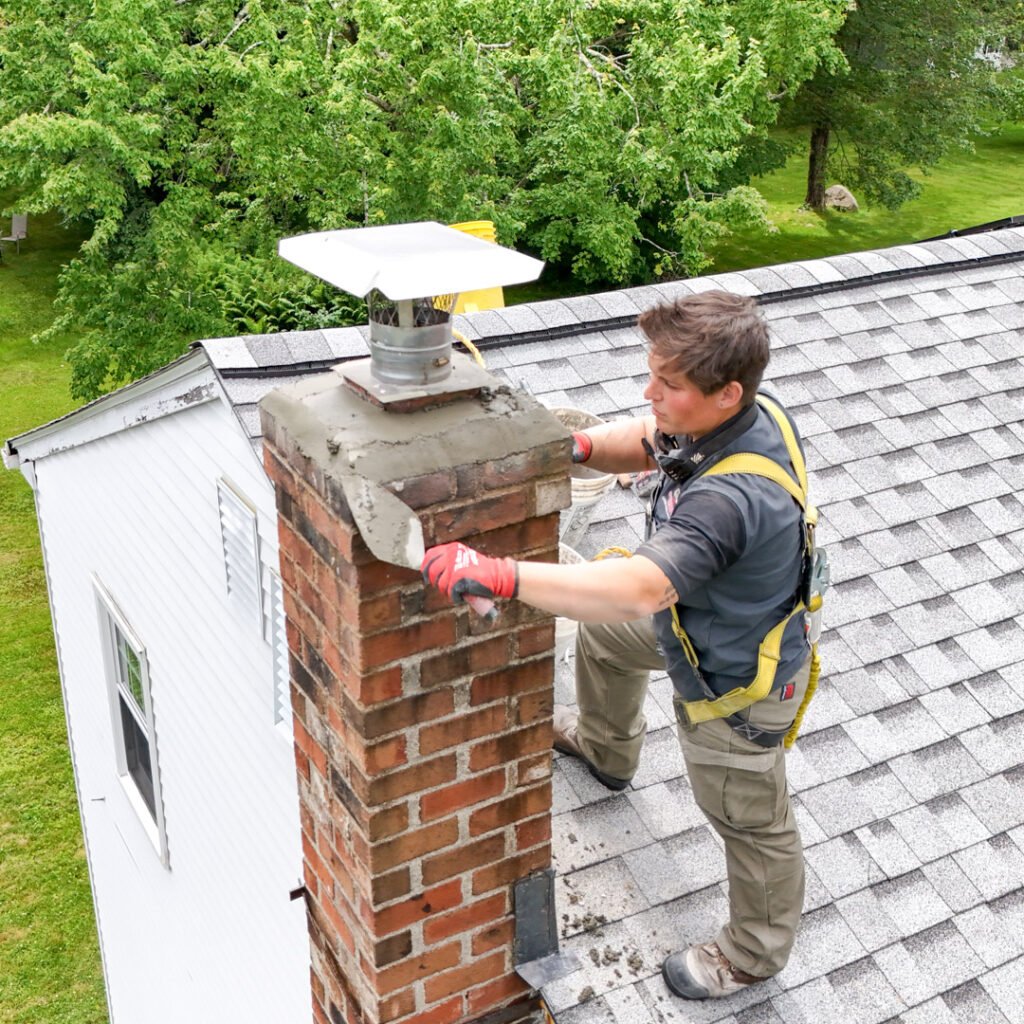
Key Takeaways
- A chimney crown is a critical protective component that serves as the first defense against water damage, requiring regular professional inspection to prevent costly repairs.
- Professional inspectors use specialized equipment like moisture meters and infrared scanning to detect early signs of damage, including cracks, water penetration, and structural weaknesses.
- Common chimney crown problems include incorrect installation, erosion, cracks, and weather-related damage, which can lead to serious structural issues if left unaddressed.
- Regular professional maintenance can reduce repair costs by up to 75% over a chimney’s lifetime, according to the Chimney Safety Institute of America.
- The repair process involves three key phases: detailed inspection, selection of appropriate materials, and professional implementation using industry-standard procedures.
Understanding Chimney Crowns: A Brief Overview
A chimney crown serves as the first line of defense against water penetration at the top of masonry chimneys. Located at the chimney’s uppermost portion, this concrete or mortar component protects the entire chimney structure from moisture damage.
What is a Chimney Crown and its Function
The chimney crown is a concrete or mortar cap that covers the top of the chimney from edge to edge, except for the flue opening. Its primary functions include:
- Directing water away from the chimney’s center through a 1/4-inch slope from the flue to the edge
- Protecting the masonry structure beneath from moisture penetration
- Supporting proper venting and airflow through the flue
- Creating a weatherproof seal between the flue liner and masonry
According to the Chimney Safety Institute of America (CSIA), a properly constructed crown extends at least 2 inches beyond the chimney edges with a minimum thickness of 3 inches at its thinnest point.
Signs Your Chimney Crown Needs Repair
Identifying crown damage early prevents extensive deterioration. Here are common indicators that signal crown issues:
Visible Damage:
- Hairline fractures across the crown surface
- Spalling or flaking concrete
- Rusted metal components near the crown
- Missing pieces along crown edges
- Gaps between the crown and flue liner
- Water stains on interior walls near the chimney
- Moisture in the firebox
- White mineral deposits (efflorescence) on exterior masonry
- Crumbling mortar joints below the crown
| Crown Component | Standard Measurement | Purpose |
|---|---|---|
| Overhang | 2-2.5 inches | Water deflection |
| Thickness | 3-4 inches | Structural integrity |
| Slope | 1/4 inch per foot | Drainage efficiency |
| Flue extension | 2-6 inches | Proper ventilation |
A comprehensive crown assessment by certified professionals prevents these issues through early detection and timely repairs. Professional inspection evaluates structural weakness, moisture damage, and potential freeze-thaw damage risks while ensuring proper crown and cap compatibility.
Importance of Professional Inspection for Chimney Crowns
Professional chimney crown inspections protect homeowners from costly repairs through early detection of potential issues. Our certified inspectors perform comprehensive crown assessments to maintain the integrity of this crucial chimney component.
Identifying Potential Issues Early
Professional inspectors detect critical problems in chimney crowns through specialized techniques:
- Moisture testing equipment identifies hidden water damage
- Infrared scanning reveals internal structural weaknesses
- High-resolution cameras capture detailed images of hairline fractures
- Professional-grade tools assess crown joint integrity
- Advanced measuring devices verify proper crown slope angles
Key warning signs our inspectors look for include:
- Crumbling or flaking mortar at crown edges
- Rust spots on metal components near the crown
- Water stains on interior chimney walls
- Gaps between the crown and flue liner
- Uneven crown surfaces affecting drainage
Ensuring Proper Maintenance of Your Chimney
Our maintenance protocols focus on preserving crown functionality:
- Annual crown maintenance checkups identify developing issues
- Application of elastomeric waterproof layers prevents water intrusion
- Professional-grade sealants protect against freeze-thaw damage
- Crown resurfacing techniques restore damaged surfaces
- Weather-resistant solutions extend chimney lifespan
Maintenance benefits include:
- Prevention of future crown erosion
- Enhanced structural stability
- Improved water drainage
- Better venting and airflow
- Extended durability through professional restoration
According to the Chimney Safety Institute of America, regular professional inspections reduce repair costs by 75% over a chimney’s lifetime.
Source: chimney safety institute of America
| Inspection Component | Frequency | Purpose |
|---|---|---|
| Visual Assessment | Every 12 months | Identify surface damage |
| Moisture Testing | Every 24 months | Detect water infiltration |
| Structural Analysis | Every 36 months | Evaluate integrity |
| Crown Measurement | Annual | Verify proper slopes |
Common Chimney Crown Problems
Chimney crown issues emerge from various factors, leading to structural vulnerabilities in the chimney system. A comprehensive crown assessment reveals three primary categories of problems that require professional attention.
Incorrect Chimney Crown Installation
Professional masonry services identify these common installation errors:
- Insufficient overhang less than the required 2-inch extension
- Improper crown slope creating water pooling areas
- Missing drip edges for effective water drainage
- Inadequate material thickness below 3 inches
- Poor-quality crown materials lacking durability
- Improper crown and cap compatibility
These installation defects lead to:
| Issue | Impact | Prevention Cost |
|---|---|---|
| Water pooling | Accelerated deterioration | $300-500 |
| Structural weakness | Complete crown failure | $800-1,200 |
| Inadequate drainage | Interior water damage | $500-700 |
Chimney Crown Erosion and Cracks
Crown deterioration patterns include:
- Hairline fractures from temperature fluctuations
- Spalling concrete surfaces
- Crumbling mortar joints
- Deteriorated flue connection areas
- Rusted metal components near crown edges
- Joint separation between crown sections
Professional solutions involve:
- Applying crown coat sealants
- Adding elastomeric waterproof layers
- Crown resurfacing techniques
- Crown joint sealing
- Removing and reapplying mortar
- Reinforcing crown structure
Problems Caused by Weather Conditions
Environmental factors affecting crown integrity:
- Freeze-thaw cycles creating structural stress
- Heavy rainfall causing moisture damage
- UV exposure deteriorating sealants
- Wind-driven precipitation affecting drainage
- Temperature extremes expanding cracks
- Snow accumulation stressing crown surfaces
Weather-specific solutions include:
| Protection Method | Durability | Average Cost |
|---|---|---|
| Weather-resistant sealants | 5-7 years | $400-600 |
| Professional-grade coatings | 7-10 years | $600-800 |
| Waterproof membranes | 10+ years | $800-1,000 |
According to the Chimney Safety Institute of America, proper crown maintenance reduces repair costs by 65% over a 10-year period through prevention of weather-related damage.
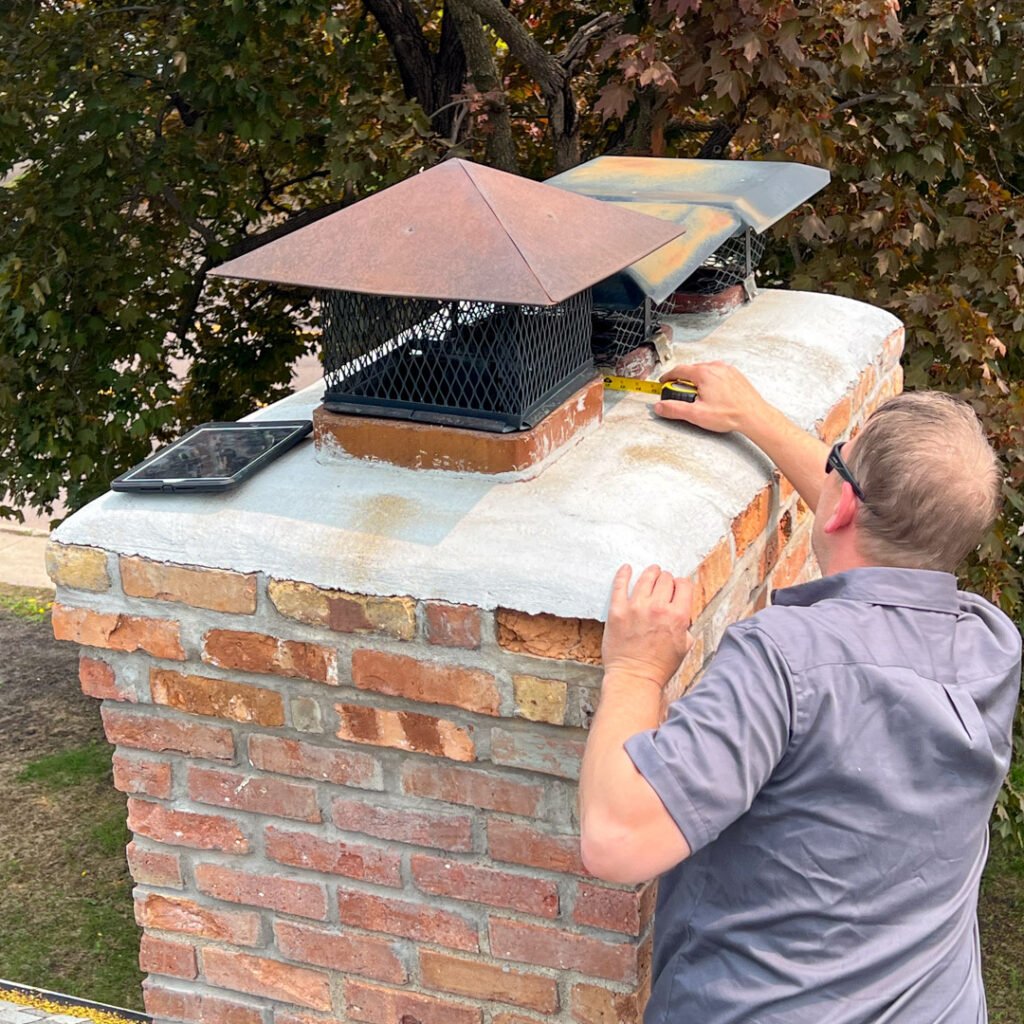
Steps Involved in Professional Chimney Crown Repair
Professional chimney crown repair follows a systematic approach to restore and protect this crucial component. The repair process involves three main phases: inspection, material selection, and implementation.
Detailed Inspection
The repair process begins with a comprehensive crown assessment by certified professionals. Our technicians use specialized tools including:
- Moisture meters to detect water penetration levels
- High-resolution cameras for detailed documentation
- Infrared scanning equipment to identify hidden issues
- Surface mapping tools to measure crack depths
The inspection focuses on identifying cracks and damage patterns while assessing for structural weakness in the entire crown system. This evaluation determines whether the crown needs minor repairs, resurfacing, or complete replacement.
Choosing the Right Repair Materials
Material selection depends on the extent of damage and environmental conditions. Professional-grade materials include:
| Material Type | Application | Durability (Years) |
|---|---|---|
| Portland Cement Mix | Full Crown Replacement | 15-20 |
| Crown Coat Sealants | Surface Protection | 5-7 |
| Elastomeric Coatings | Waterproofing | 10-12 |
| Fiber-Reinforced Mortar | Crack Repair | 8-10 |
Weather-resistant solutions are essential for areas experiencing frequent freeze-thaw cycles. Our specialists select materials that:
- Maintain flexibility in temperature extremes
- Create strong bonds with existing masonry
- Provide superior water resistance
- Ensure proper crown and cap compatibility
Repair Process and Finishing
The repair sequence follows industry-standard procedures:
- Remove damaged materials
- Clear loose mortar
- Clean surface thoroughly
- Remove rusted metal components
- Apply repairs
- Fill deep cracks with fiber-reinforced mortar
- Resurface deteriorated areas
- Install new flashing if needed
- Carry out protection
- Apply crown coat sealants
- Add elastomeric waterproof layers
- Ensure proper slope for water drainage
- Verify appropriate flue extension
- Quality control
- Check joint sealing
- Confirm proper venting and airflow
- Test surface integrity
- Document completed repairs
Each step requires specific expertise to prevent future crown erosion and extend the chimney’s lifespan through professional restoration.
Risks of DIY Versus Benefits of Hiring a Professional
We’ve seen how a well-maintained chimney crown is crucial for protecting your home’s structural integrity. While DIY repairs might seem cost-effective they often lead to more extensive damage and higher expenses down the line.
Professional chimney crown repair isn’t just about fixing visible issues – it’s about ensuring long-term protection for your entire chimney system. By partnering with certified professionals you’ll benefit from their expertise specialized tools and proven repair methods that extend your chimney’s lifespan.
Don’t wait until small problems become major headaches. Take action now by scheduling a professional inspection to protect your investment and maintain your home’s safety. Your chimney crown deserves expert attention to continue serving as your first line of defense against weather-related damage.
Frequently Asked Questions
What is a chimney crown and why is it important?
A chimney crown is a protective cap at the top of your chimney that directs water away from the masonry structure. It’s crucial because it prevents water damage, structural deterioration, and expensive repairs. Think of it as your chimney’s umbrella, protecting the entire system from weather-related damage.
How often should a chimney crown be inspected?
Annual inspections are recommended for chimney crowns. Regular professional checkups can identify potential issues early, preventing major repairs and reducing maintenance costs by up to 75% over the chimney’s lifetime.
What are common signs of chimney crown damage?
Look for visible cracks, water stains, crumbling mortar, rust spots, and uneven surfaces. These signs indicate potential deterioration that requires immediate attention. Interior water stains or dampness near the fireplace can also suggest crown damage.
How long does a chimney crown typically last?
A properly constructed and maintained chimney crown can last 20-30 years. However, factors like weather exposure, initial construction quality, and maintenance frequency can significantly impact its lifespan.
Can I repair a chimney crown myself?
DIY repairs are not recommended for chimney crowns. Professional repairs require specialized knowledge, tools, and materials like Portland cement mix and elastomeric coatings. Improper repairs can lead to more severe damage and safety hazards.
What causes chimney crown deterioration?
The main causes include freeze-thaw cycles, heavy rainfall, poor initial installation, and natural weathering. Installation defects like insufficient overhang and improper slope can accelerate deterioration and lead to structural problems.
How much does professional chimney crown repair cost?
Costs vary depending on damage extent and repair type, but early intervention through regular maintenance can reduce repair costs by 65% over a decade. Minor repairs might cost a few hundred dollars, while complete crown replacement can run into thousands.
What preventive measures can protect a chimney crown?
Professional-grade sealants and waterproof layers should be applied periodically. Annual inspections, proper drainage maintenance, and prompt repair of minor issues are essential preventive measures for extending crown life.
